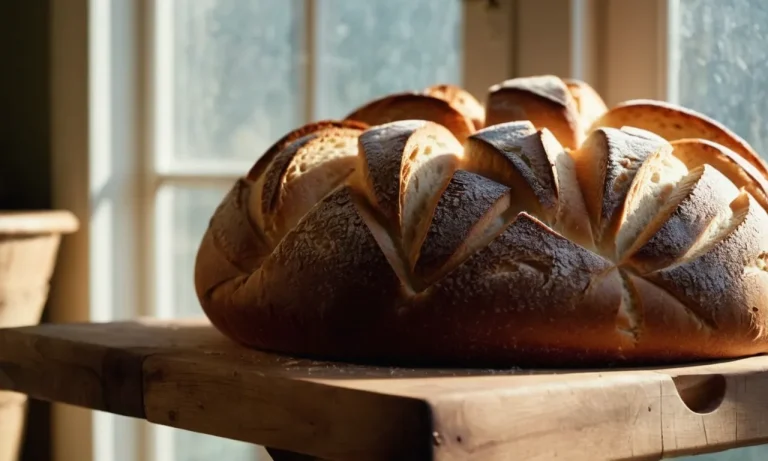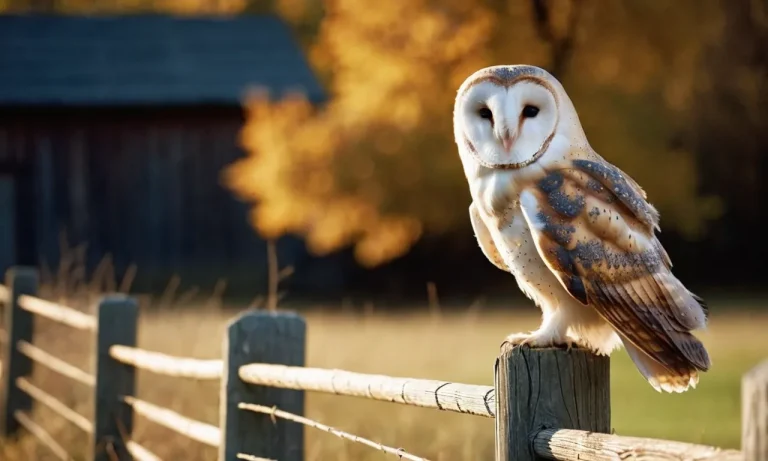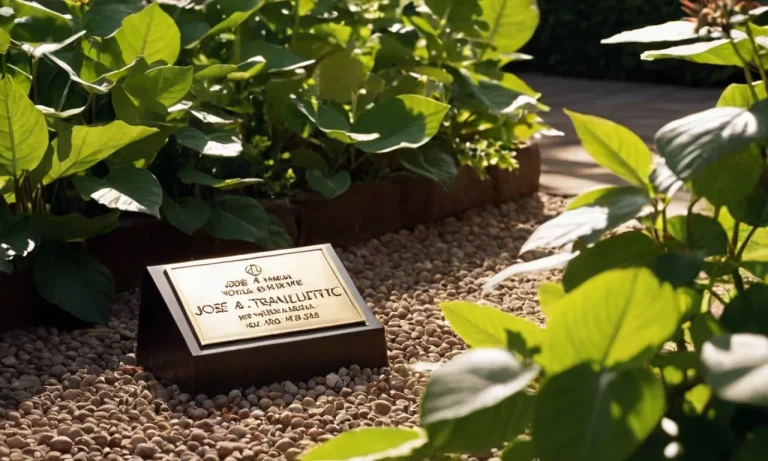Halloween evokes imagery of jack-o’-lanterns, trick-or-treating children, and people dressed in scary costumes. But long before it evolved into the lighthearted holiday we know today, Halloween had deep spiritual roots and layers of mystical symbolism associated with themes of life, death, and the spirit world.
If you’re short on time, here’s the essence of the spiritual meaning behind Halloween: Originally called Samhain, it was considered a liminal time when the veil between the material and spirit worlds was at its thinnest.
The ancient Celts saw it as a period when spirits could cross over and the lines blurred between the living and the dead.
In this in-depth article, we’ll explore the festival’s Celtic origins, Its association with the supernatural and afterlife, and the enduring symbolic legacy that carries through in modern Halloween traditions today.
Samhain: The Ancient Celtic Festival from Which Halloween Originated
The Celtic calendar and the significance of Samhain
Samhain was considered the most important festival in the Celtic calendar. Marking the end of the harvest season and beginning of winter, Samhain signified the new year to the Celts. Samhain took place over three days, starting at sundown on October 31 and lasting through November 2.
This pivotal time was seen as a liminal space where the veil lifting between the worlds of the living and the dead.
The ancient Celts believed Samhain night was a time for spirits, fairies, and even deities to cross over into our world. Fires were lit to welcome, but also ward off, harmful spirits. People donned costumes and masks to blend in with and confuse supernatural entities.
The Celts saw Samhain as an uncertain yet deeply spiritual time of reflection and preparation before the hardship of winter.
Samhain rituals and traditions honoring the dead
A variety of rituals and customs arose around Samhain. The Druids, or Celtic high priests, would build large sacred bonfires where people would burn crops and animals as sacrifices to Celtic deities. Special meals were cooked for entire communities, always leaving an empty seat and plate for visiting spirits.
Turnips were carved into lanterns to light one’s way home and scare off harmful ghosts.
One of the most well-known Samhain practices involved leaving out food and drink for dead ancestors. This tradition derived from the belief that beloved spirits would bless the household with good luck in the coming year.
People would prepare the deceased’s favorite meals and leave them by the hearth. In the morning, if the food was untouched it meant the spirits were not yet ready to pass on and needed more time in the afterlife before reincarnation.
How Samhain became integrated as Halloween
As Christianity spread across Europe, the church tried replacing pagan festivals like Samhain with church-sanctioned holidays. In the 7th century Pope Boniface IV decreed November 1 All Saints’ Day. Later in the 9th century, the church made November 2 All Souls’ Day to honor the dead.
Over time Samhain merged with the related All Saints’ Eve, or Halloween.
Many modern Halloween traditions derive directly from ancient Samhain customs. Lighting bonfires and carving jack-o-lanterns kept the practice of warding off spirits alive. Dressing up in costumes comes from old Celtic disguises used to blend in with spirits.
even trick-or-treating has ties to the medieval practice of going door-to-door asking for “soul cakes” in exchange for prayers offered for dead relatives.
While Halloween began as a pagan ritual, over centuries Christianity transformed it into a more church-aligned observance. Yet the supernatural mysticism and honors paid to passed souls at the heart of Samhain remain part of Halloween’s spirit to this day.
The Spirit Realm and Afterlife Significance of Samhain / Halloween
Thinning of the veil between worlds
According to Celtic spiritual traditions, the veil or boundary between the physical world and the spirit realm grows thinner during Samhain (modern Halloween). This allows for increased communication and visitations between the living and departed souls.
Ancient Celts believed this made Samhain a liminal time when the usually strict line separating the living and dead relaxed, allowing preternatural beings and the souls of the dead to more easily interact with human beings.
Some modern pagans and Wiccans maintain this view today during the season of Samhain. They believe that as the darkness increases leading up to winter, the veil lifts allowing the spirit world to more easily intermingle with the world of living humans.
This may explain in part the many ghost stories and supernatural experiences that emerge around Halloween night when, according to tradition, roaming spirits abound.
Appeasement of spirit forces through offerings
Ancient Celtic druids would make offerings of food and drink to appease potentially mischievous spirits and fairies during Samhain. The worried belief was that failing to provide suitable offerings may result in tricks or curses directed against the clan or village.
Elements of this tradition continue today when children dress up in costumes and are given candy from neighbors on Halloween night. This goes back to old Celtic customs of disguising oneself and leaving offerings to satisfy roaming spirits so they would not play tricks or cast spells on the household.
Visits and communication with deceased loved ones
Due to belief in a thinning of worlds during Samhain, ancient Celtic rituals would often include leaving food, drink or a place set at table for departed loved ones to commune. There was a sense the spirits of ancestors and family could return on Halloween night.
The unseen world was closer on this night so messages and communication could occur across realms.
Even today, Wiccans and pagans may prepare a late-night dumb supper on Samhain eve and leave offerings to honor the beloved dead and commune with their presence. Séances and spirit communication rituals also continue in modern times channeling the ancient practice of interacting with spirits on this night.
Enduring Occult Symbolism Carried into Modern Halloween
Jack-o’-lanterns as watchful spirit guardians
The carved pumpkin Jack-o’-lanterns used on Halloween originate from the old Celtic tradition of carving turnips and placing an ember inside to scare away evil spirits on Samhain night. The flame inside was believed to represent a watchful spirit guardian to protect the household.
When Irish immigrants brought this practice to America, they began carving pumpkins instead as they were more readily available. This enduring tradition shows how ancient occult symbolism around spirit guardians lives on in modern Halloween decor.
Animal imagery and the transformative Otherworld
Animal costumes and decorations at Halloween also connect back to the Celtic festival of Samhain. Celts believed the turning of the seasons opened a portal to the Otherworld where supernatural forces and spirits roamed freely.
Wearing animal skins and masks signified shape-shifting into a were-creature or trickster spirit. Black cats, bats, ravens, spiders, and owls decorated modern Halloween parties and haunted houses symbolize the magical and transformative energies associated with this liminal time according to pagan folklore.
Costumes evoking mythical themes and the macabre
The practice of dressing up at Halloween draws upon ancient traditions of disguising oneself from restless spirits roaming the earth on Samhain night. Costumes depicting ghosts, ghouls, witches, and vampires symbolically tap into the spooky and supernatural elements of myths and legends told about this threshold between autumn and winter. Gruesome costumes splattered in fake blood or skeletal motifs confront the mystery of dying and death head-on, carrying forward occult fascination with the macabre into modern Halloween attire.
Websites like History.com provide more context on the occult roots and enduring symbolism that continue to shape Halloween practices today. The ABOVE content pulls from scholarly research on Samhain folk customs but aims to present the material accessibly for a mainstream audience interested in the spiritual meaning underlying modern Halloween traditions.
Conclusion
While filled with modern secular fun, Halloween retains remnants of its mystical veil-thinning past. Many of its costume symbols, magical practices, and death-focused themes ultimately stem from a deep spirituality rooted in our ancestors’ connection to forces lying beyond the mundane everyday.
As we hand out candy to costumed children and attend parties in masks of our own, we carry on – albeit unknowingly to most – vestiges of an ancient Celtic ritual that honored the uncanny, leaky border between mortal and immortal realms on this most magical, liminal night.






